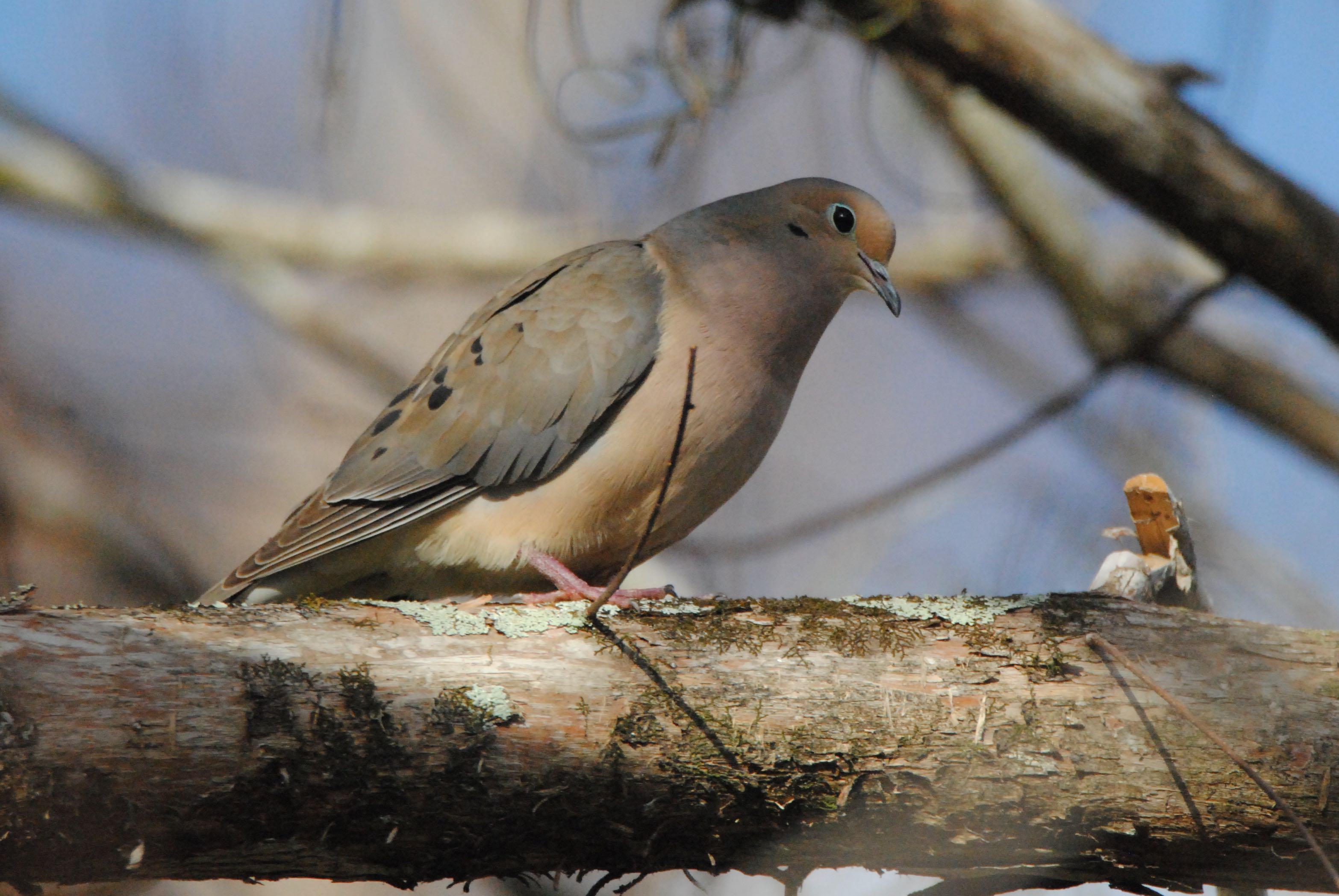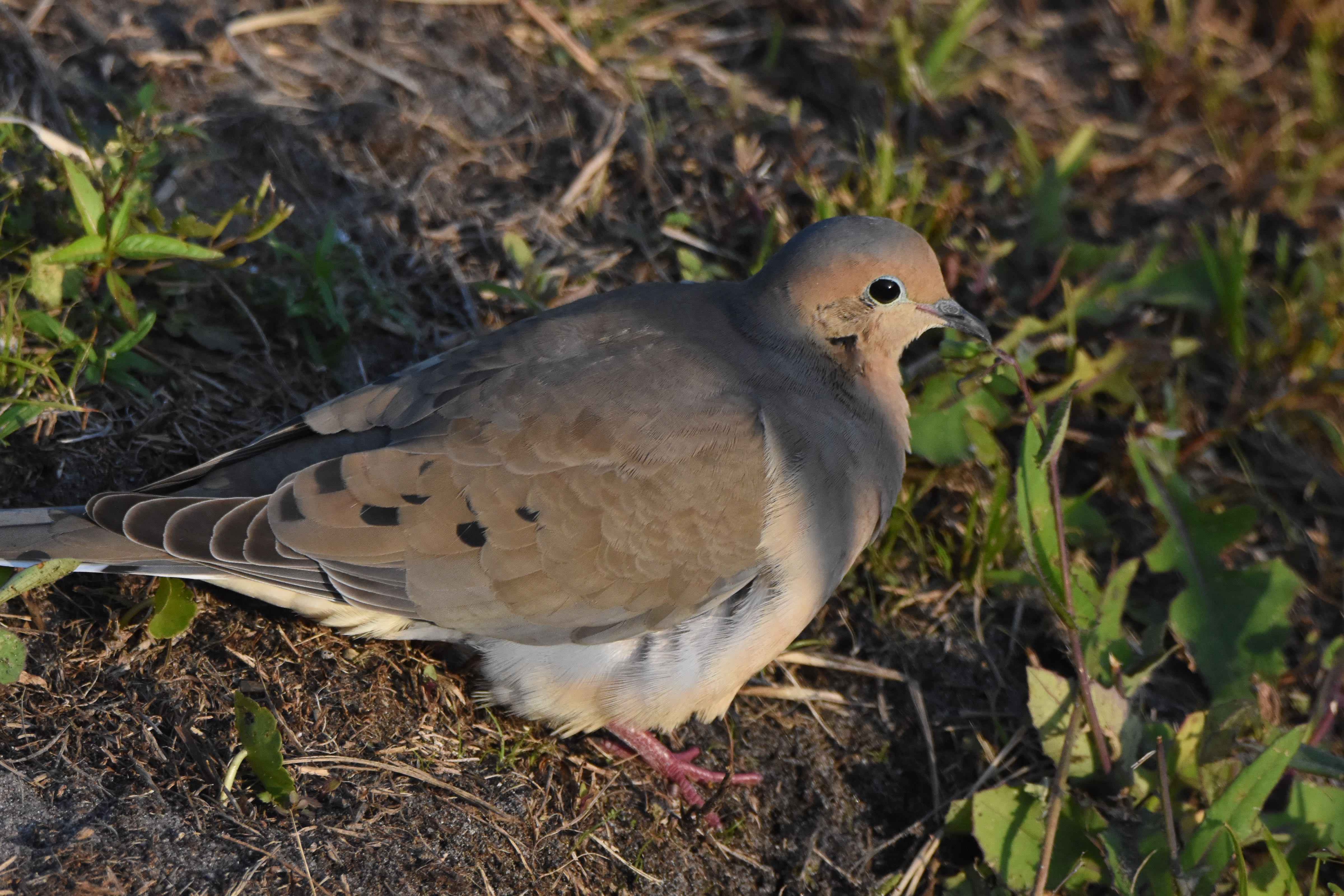
Mourning doves, photographed at Tivoli Sand Pines Preserve, Deerfield Beach, Broward County, in April 2014.
The mourning dove, Zenaida macroura, is the most hunted bird in North America — hunters bag 20 million of them every year, according to Cornell Labs. No wonder they make that doleful call! On the other hand, there are a lot of them — it's estimated that the North American mourning dove population is somewhere near 350 million.
This is a bird that you more than likely will hear before you see it. It's loud, but so common that it becomes background noise. Mourning doves are somewhat similar to their cousin, the white-winged dove, except they lack the white bars on the wings, and its tail is pointed compared with the squared off tail of the white-winged. It's a brownish bird, with black spots on its back, and white-tipped wings. It might seem like a plain bird, but a close-up of its face reveals an egg-blue eye ring that is quite pretty. The other noticeable feature is the head — it's small in proporation to the large body. Doves go about a foot head to the tip of the tail, with a wingspan of about 18 inches.
Mourning doves are ground foragers, making quick dashes for seeds. They'll find a field and literally gobble every seed they can and store it in compartment in their esophagus called a crop. They'll fly back to a safe spot where they can perch and digest their haul. According to Cornell, one crop was found to have 17,200 seeds in it. Hunting can take a toll on this bird in a second though unintended way — mourning doves will eat lead shot as they forage and develop lead poisoning as a result.
Favorite habitats include open forests and edges of forests. Mourning doves also need open ground where they can forage for their favorite food, which happens to be grass seeds.
Mourning doves will gather sticks for a nest in trees, in brush, on the ground, or whatever happens to be handy. The female usually will lay two white eggs that will hatch in about two weeks. The young are nest-bound for two more weeks. Both parents handle egg-sitting duties, and both feed their offspring "pigeon milk," a liquid excreted from the crop, which is present in both males and females. The fledged doves will hang around for a week or two more to be fed by their parents. In Florida, a mating pair can have as many as five or six broods a season.
This bird is ubiquitous. Look for it in towns, in fields, perched on electrical wires, in shrubs — just about anywhere except deep woods. It's a year-round resident of South Florida, as it is throughout the United States.
The typical lifespan for a mourning dove is about a year, but they can live up to 19 years in the wild. They're susceptable to a variety of diseases and parasites, and they're the targets of many predators, including cooper hawks and sharp-shinned hawks, falcons, raccoons, dogs, feral cats and rat snakes. Human hunting seems to have had little impact on their numbers, according to the University of Florida. The biggest problem for the species is a decline in suitable habitat, both for nesting and for foraging.
Some mourning doves will spend the summer in Canada and winter in parts of Florida, Mexico and Central America, but by and large, this is not a migratory bird.
Mourning doves are members of Columbidae, the family of doves and pigeons.
Tivoli Sand Pines Preserve



